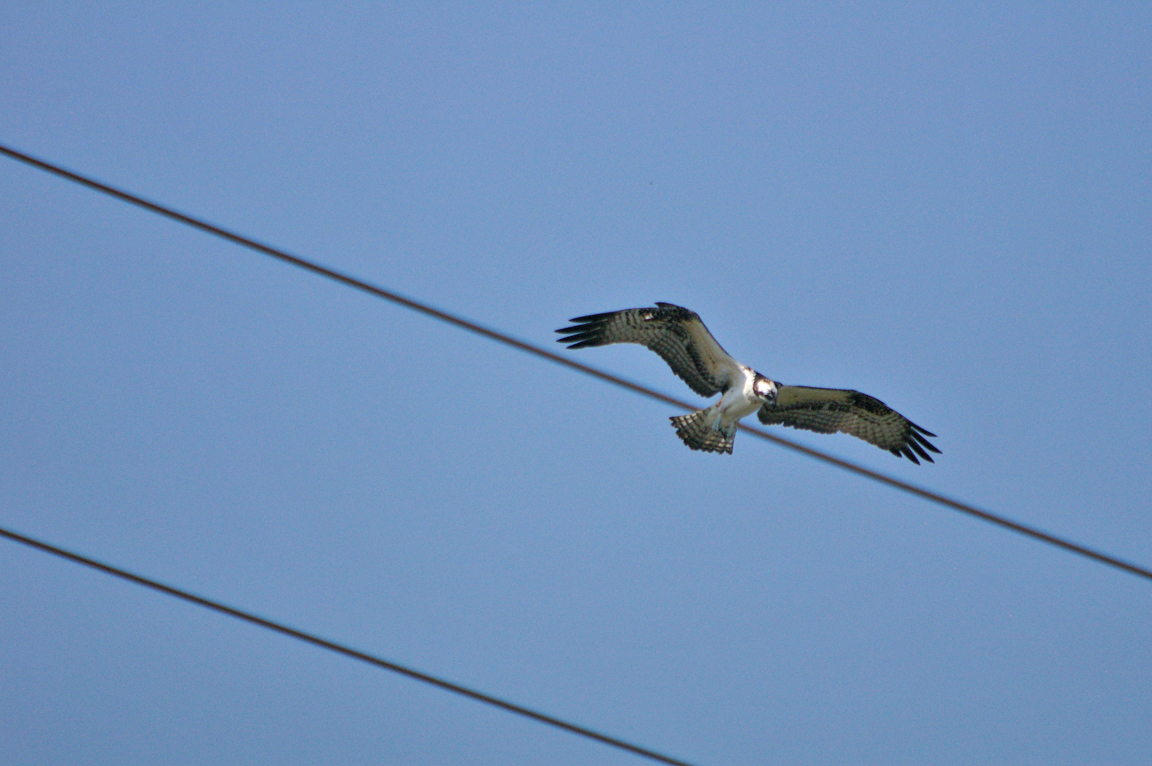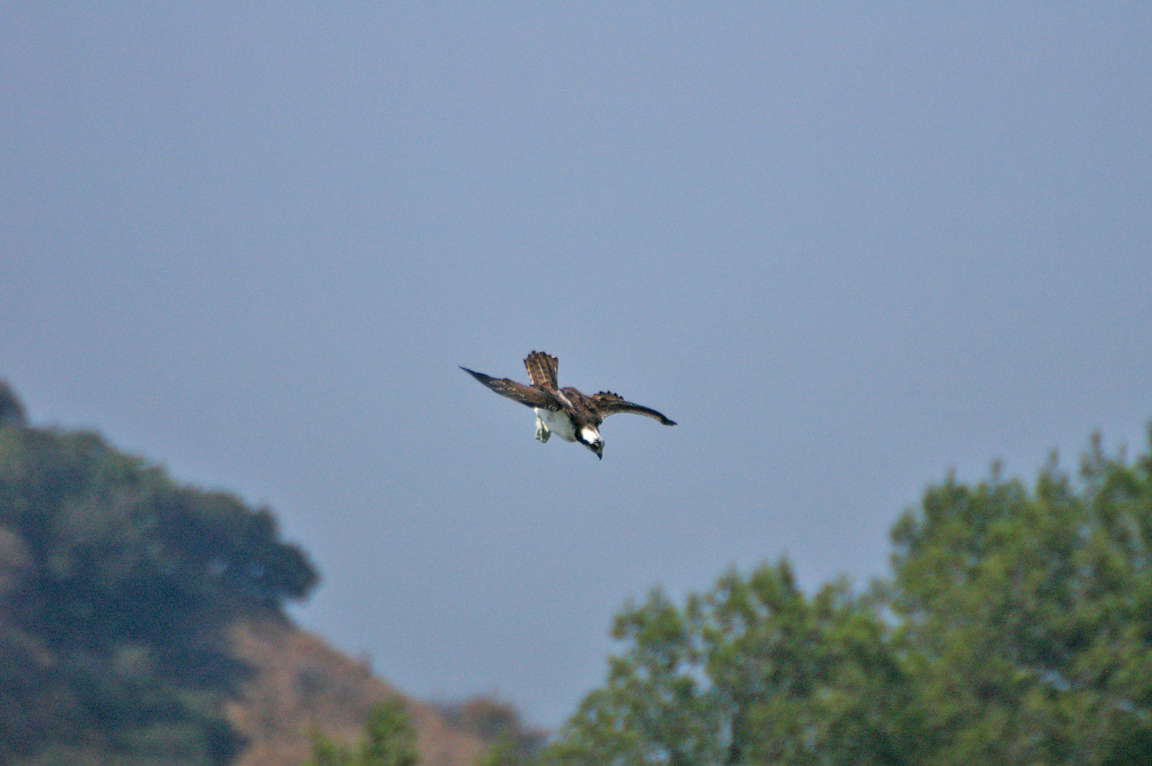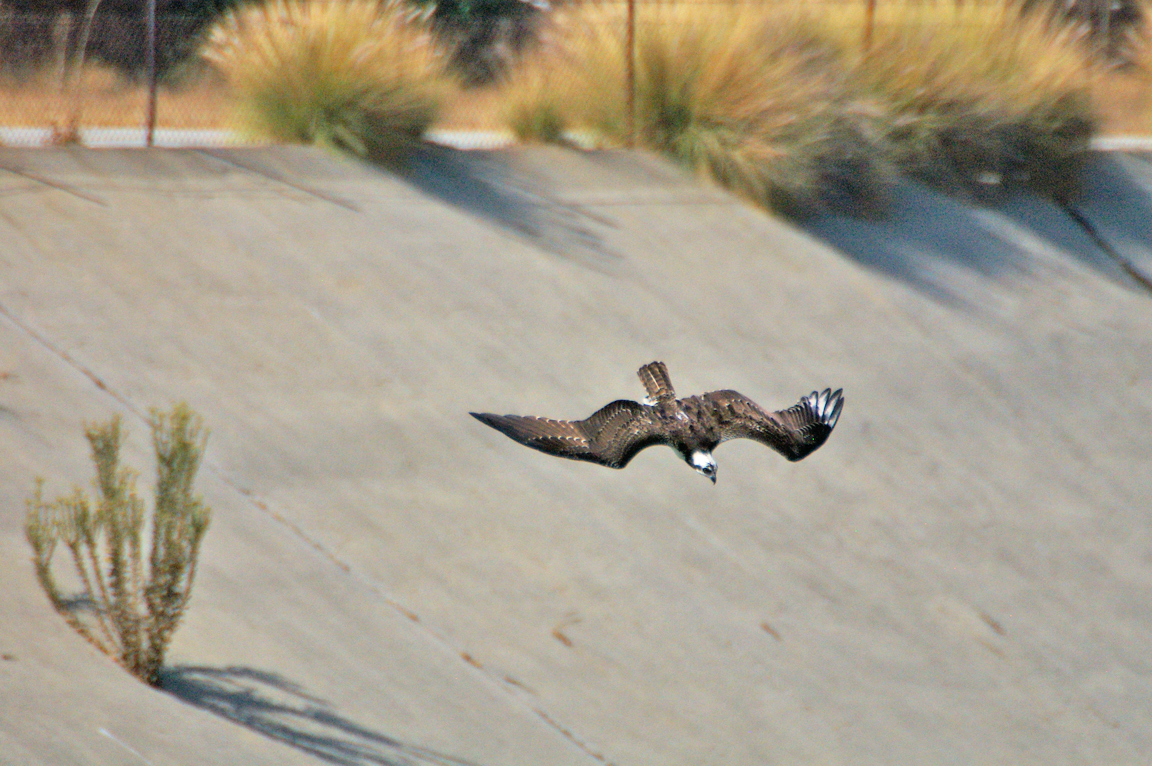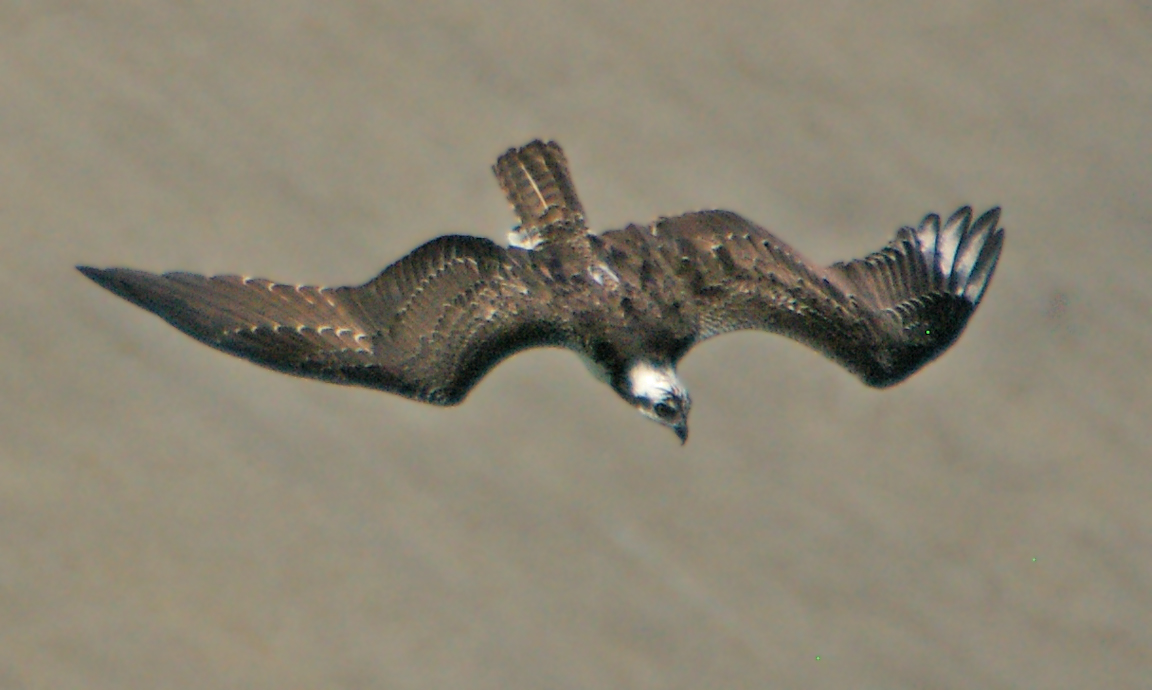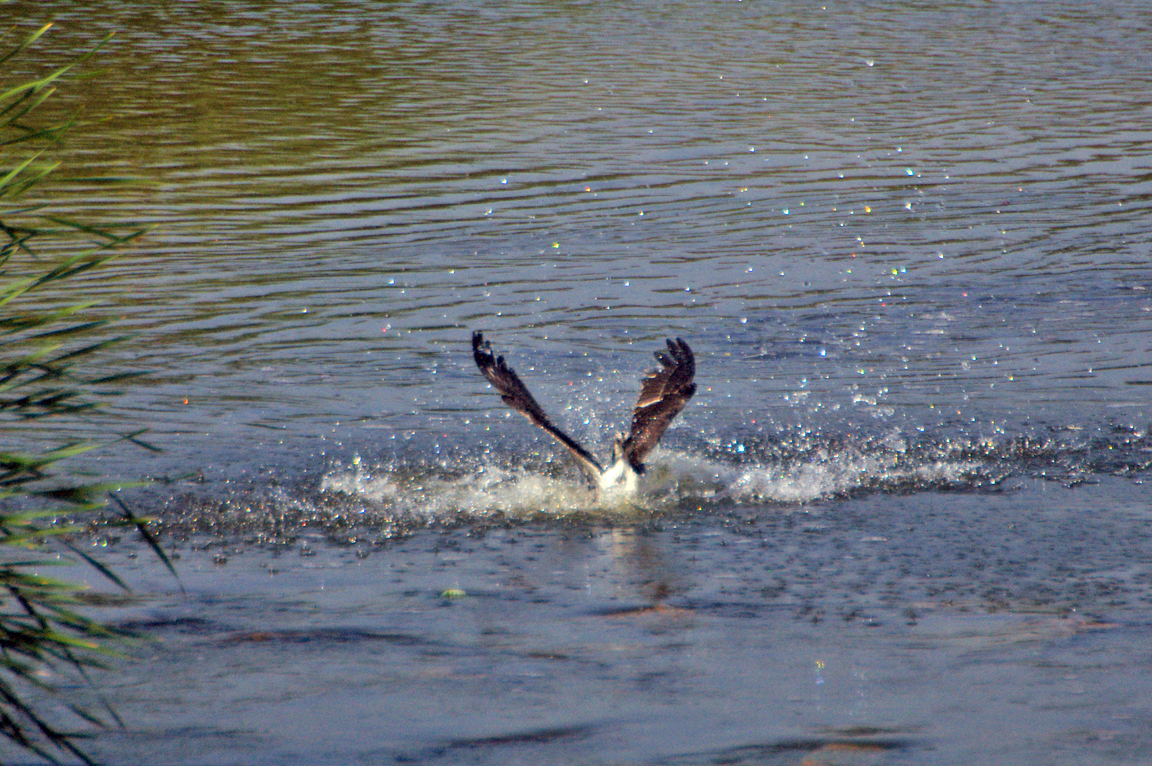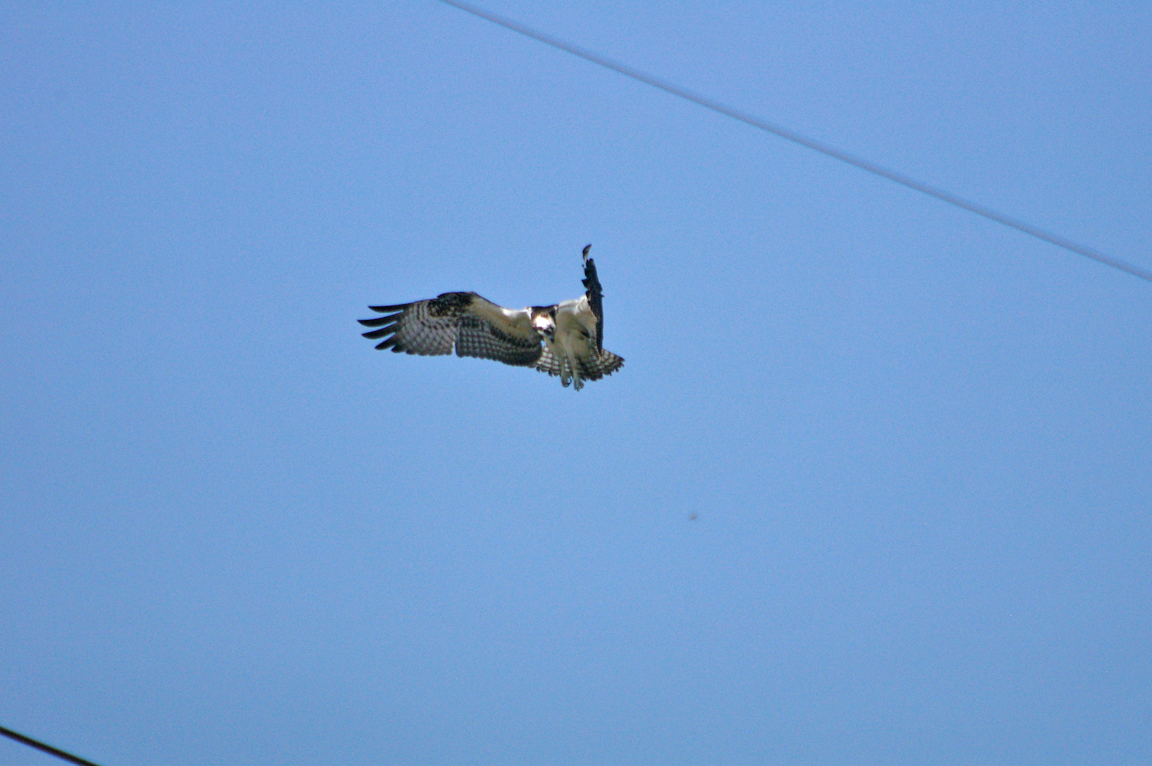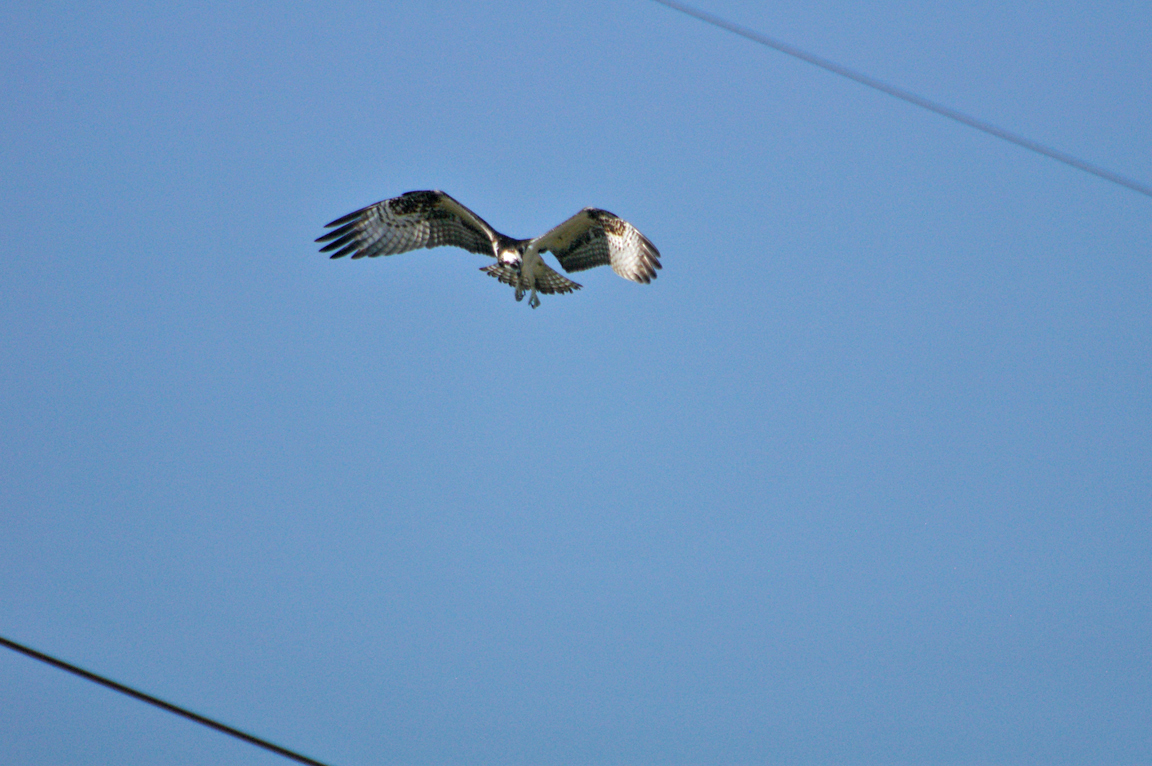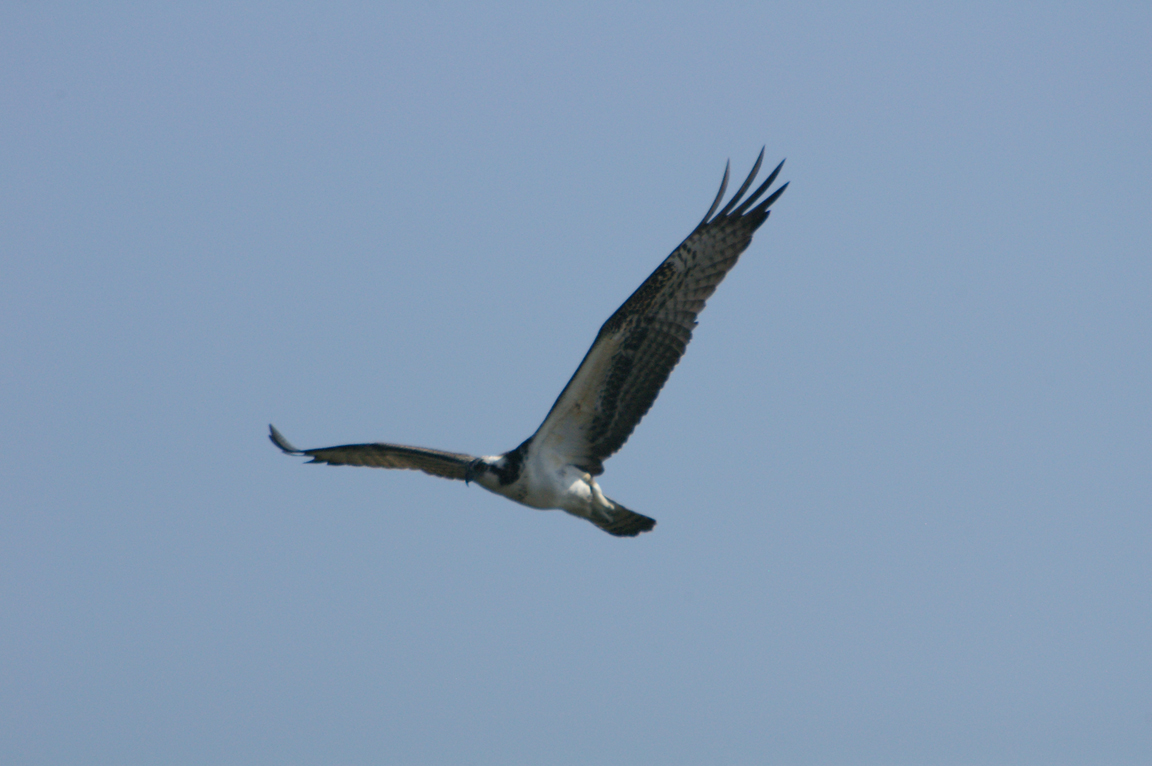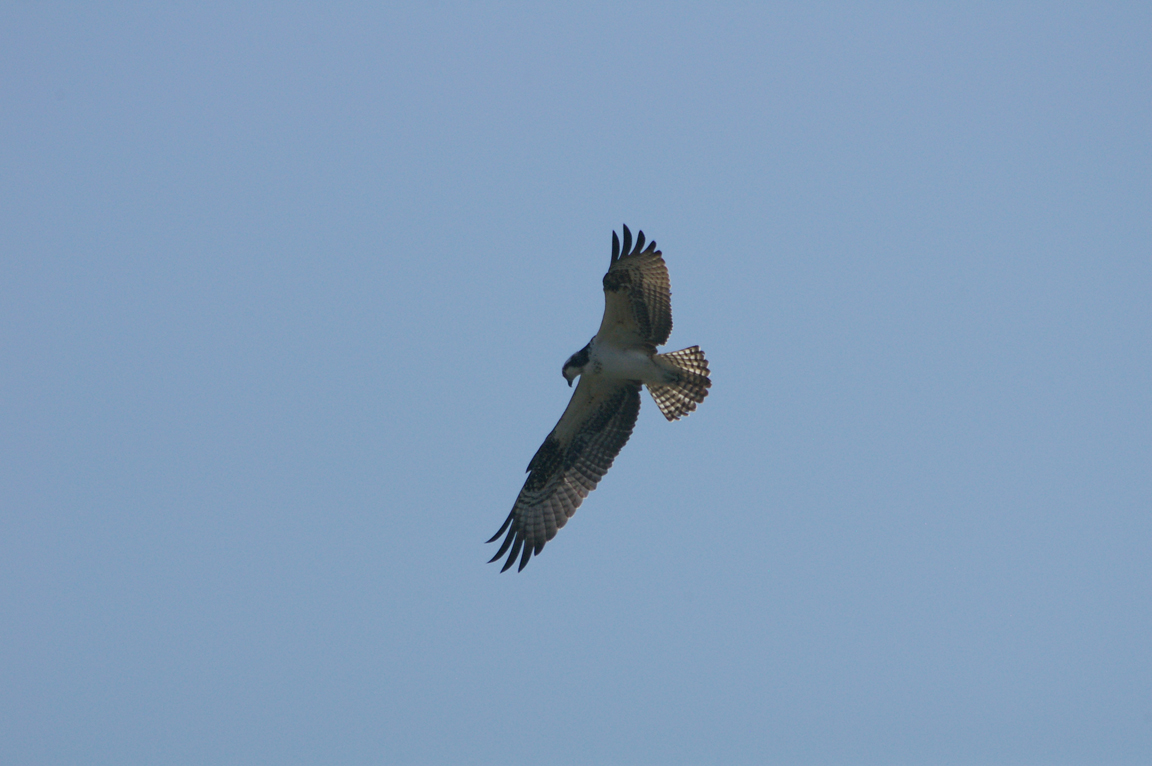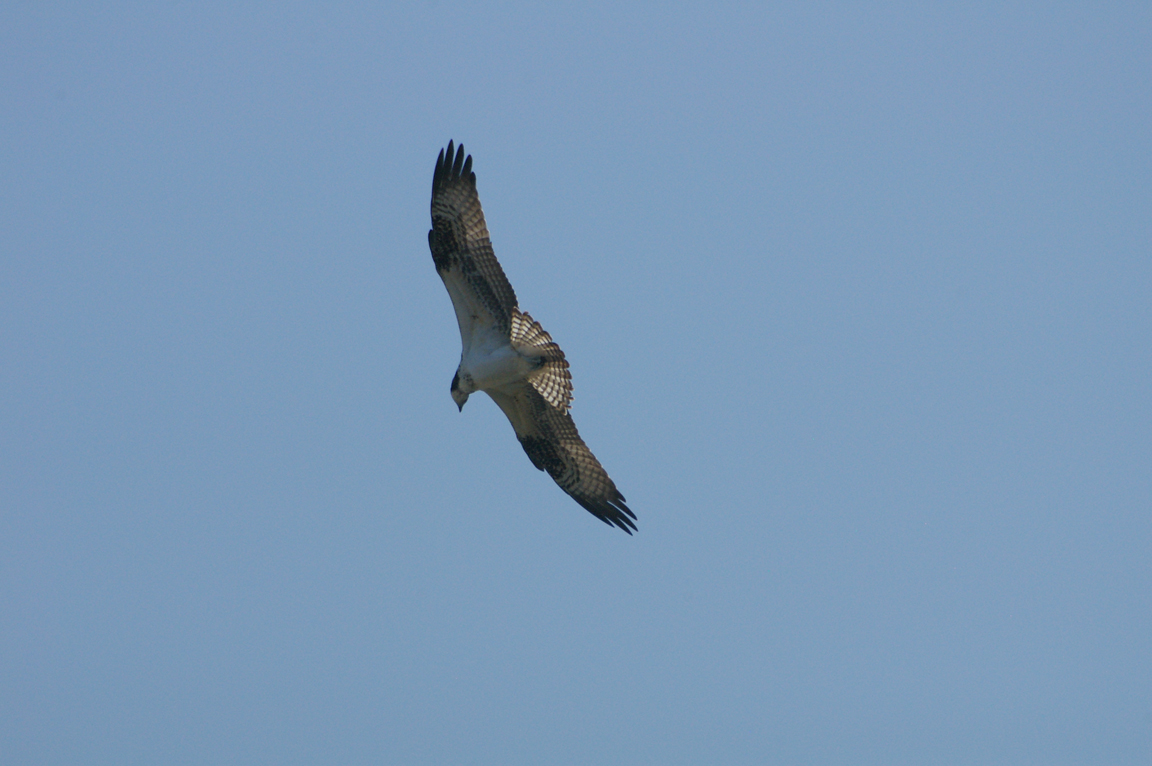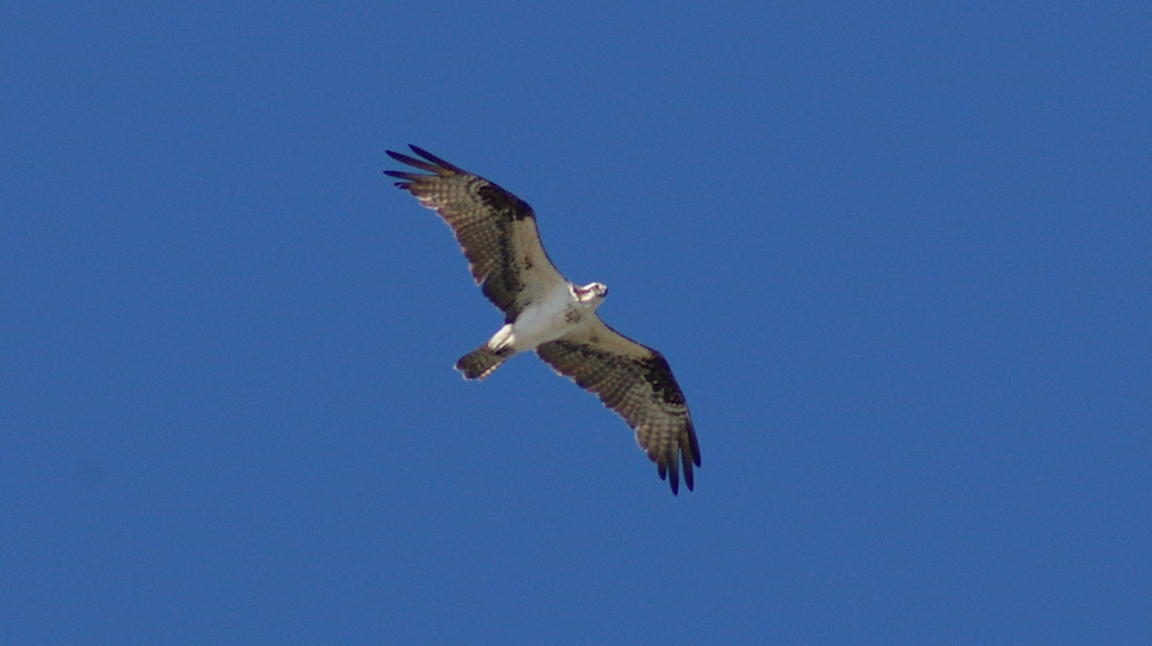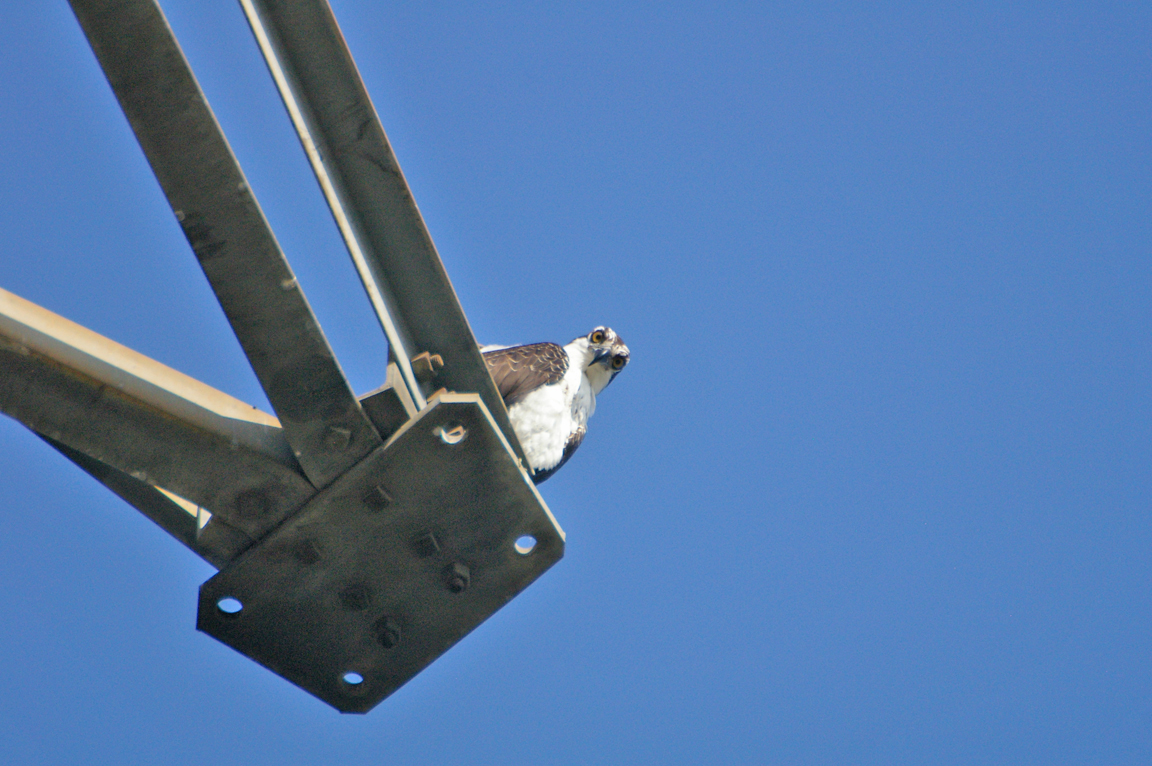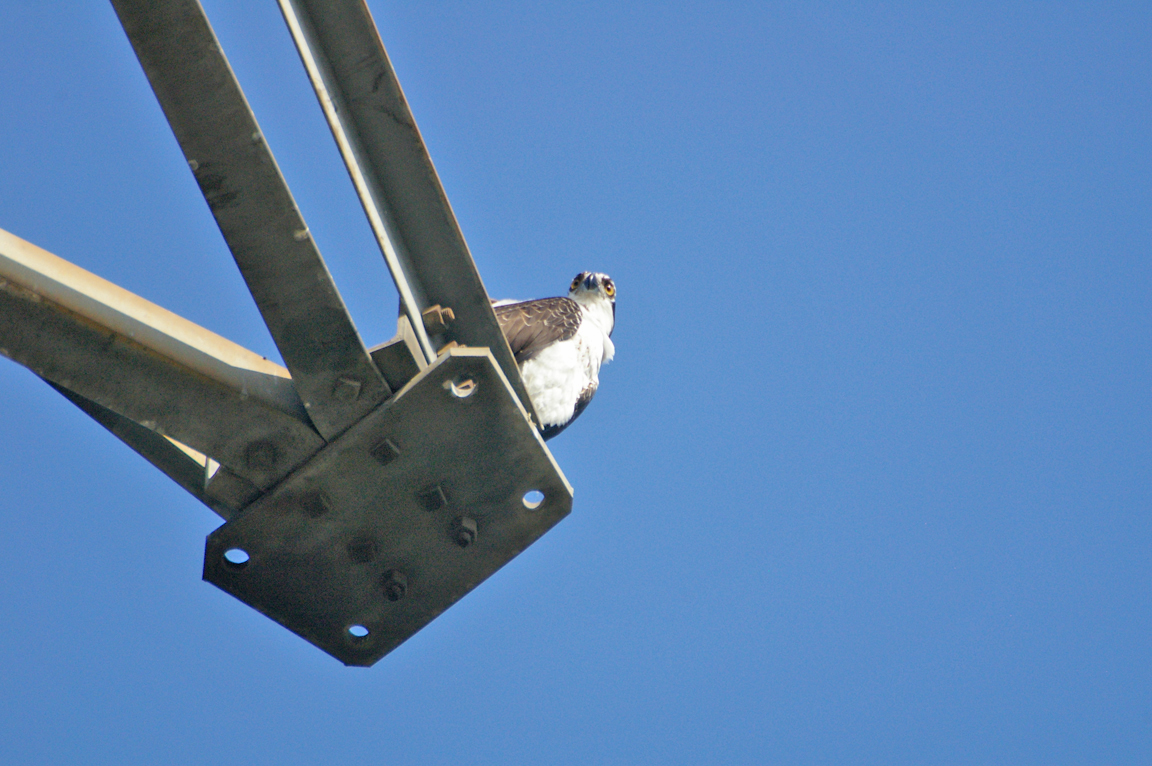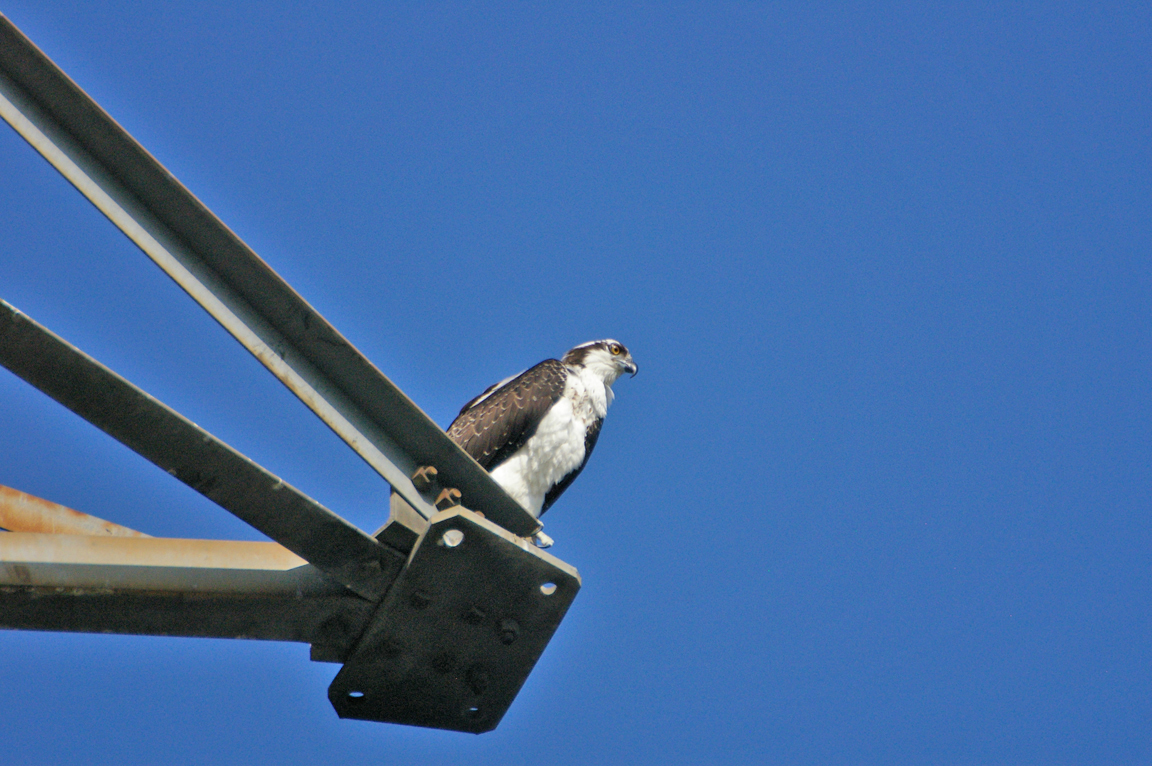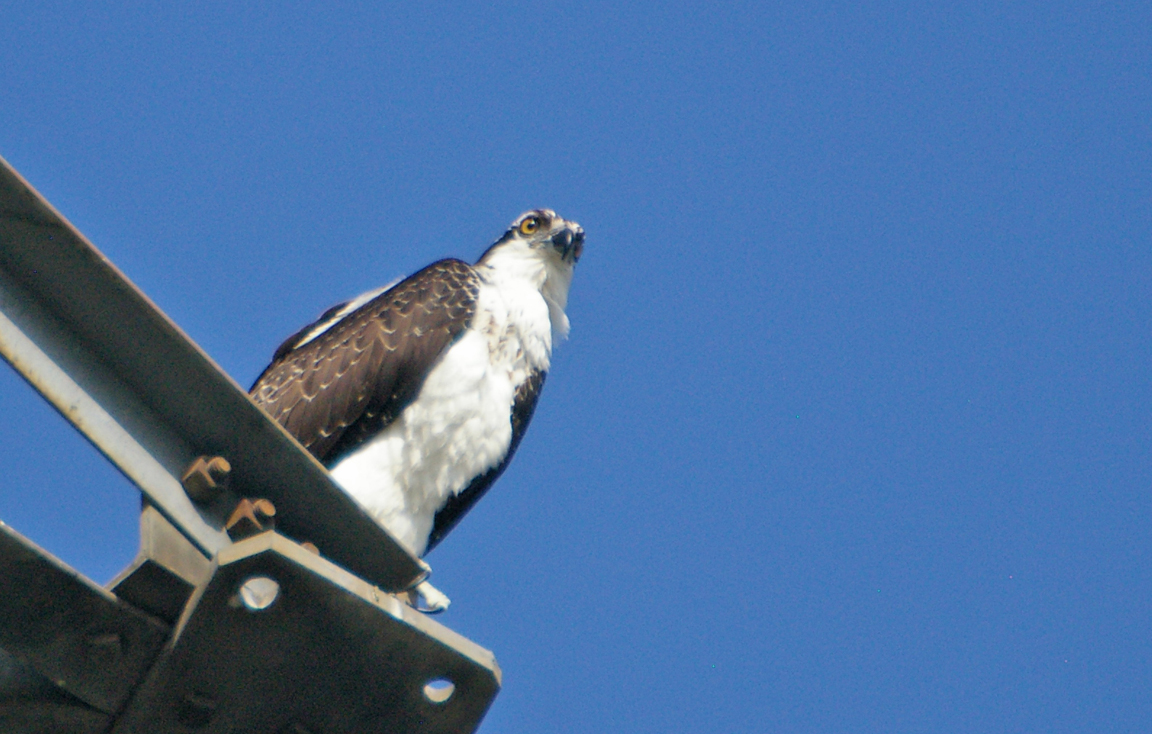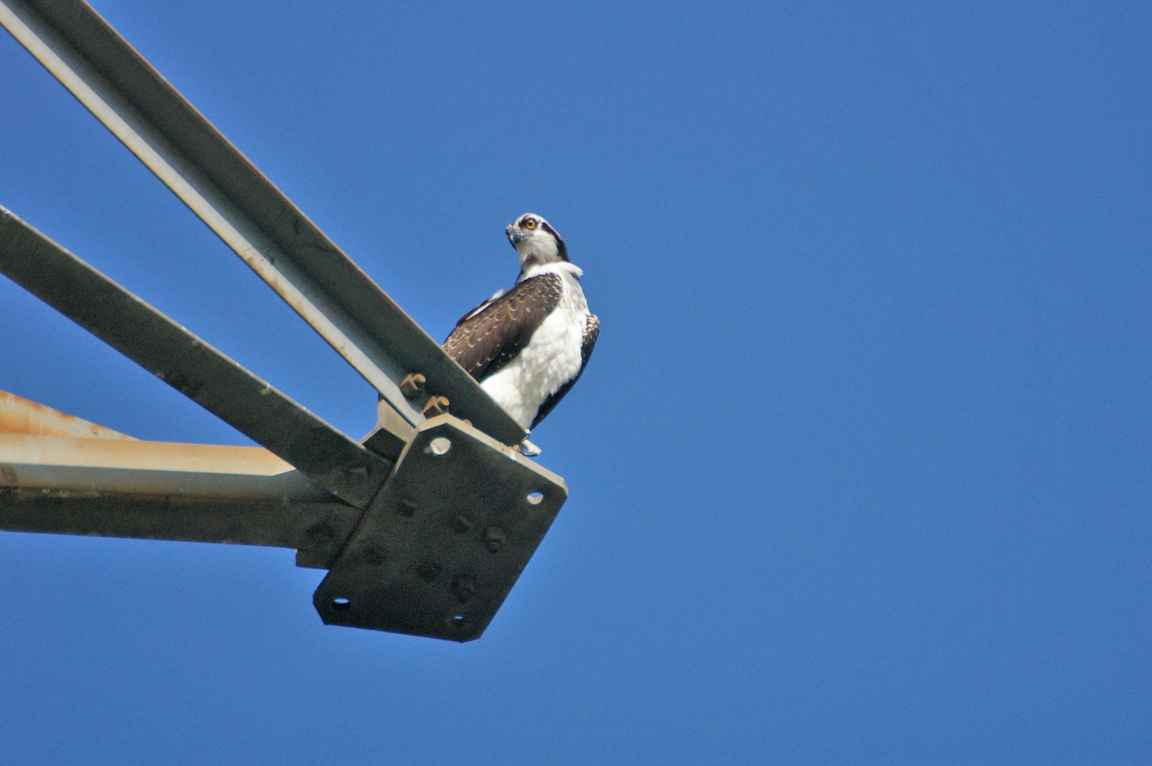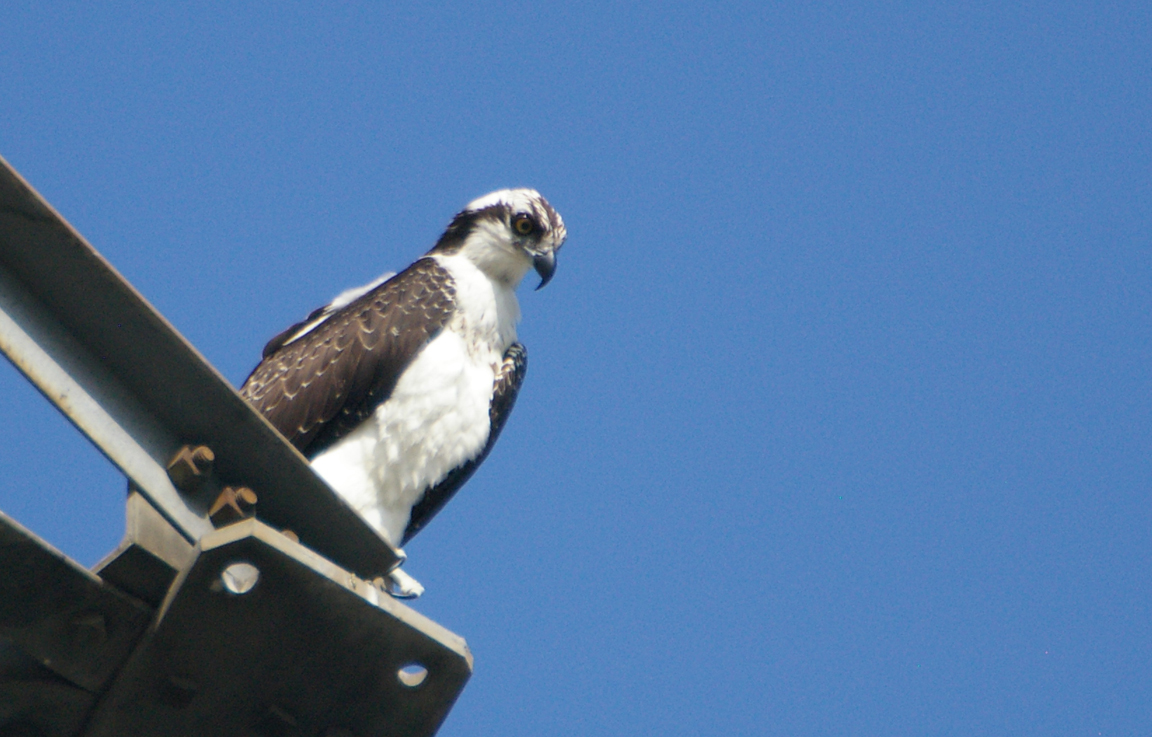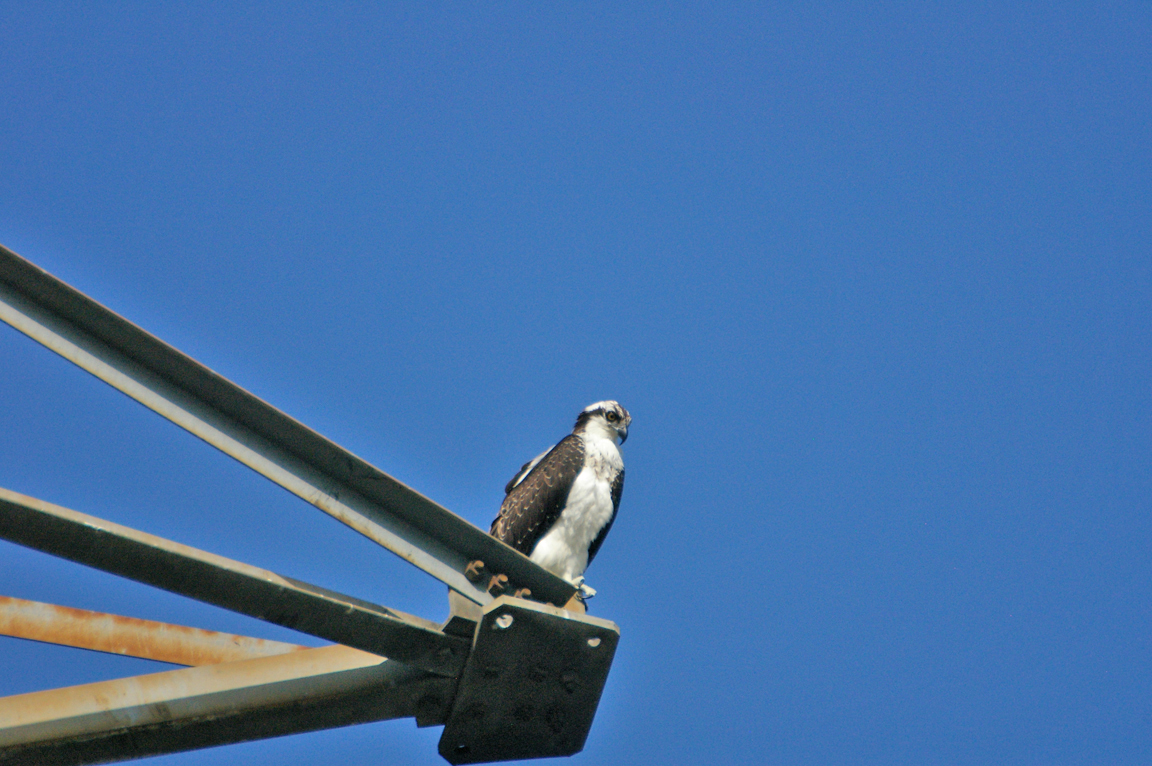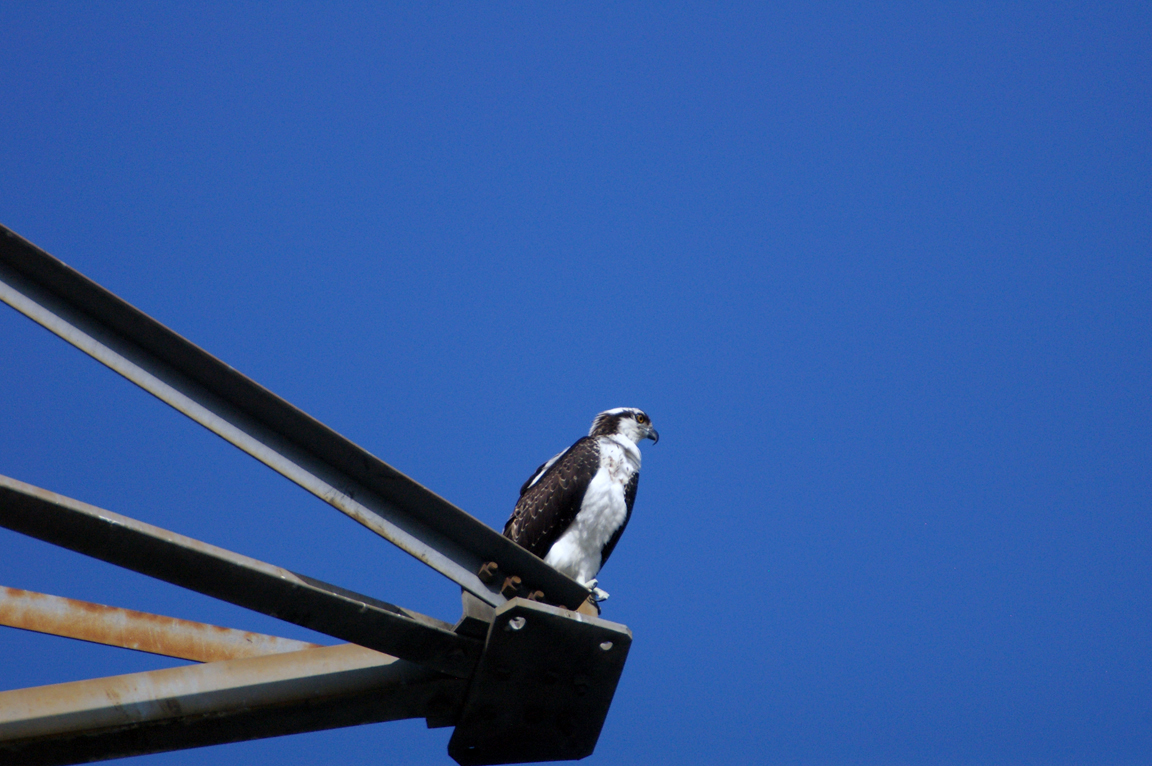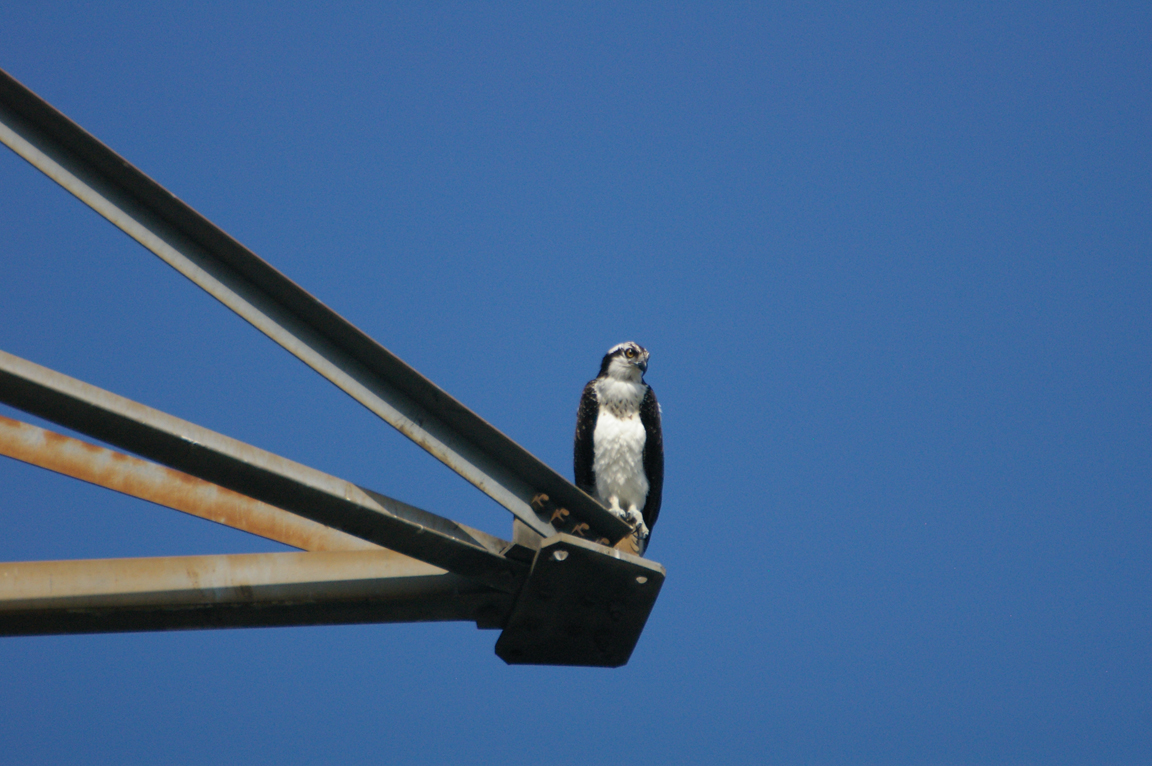|
|
|
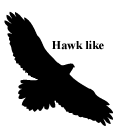 |
Osprey
|
| Pandion haliaetus | |
One of the largest birds of prey in North America, the Osprey eats almost exclusively fish. It is one of the most widespread birds in the world, found on all continents except Antarctica.
Interesting Information
-
The Osprey readily builds its nest on manmade structures, such as telephone poles, channel markers, duck blinds, and nest platforms designed especially for it. Such platforms have become an important tool in reestablishing Ospreys in areas where they had disappeared. In some areas nests are placed almost exclusively on artificial structures.
-
Osprey eggs do not hatch all at once, but instead the first chick hatches out up to five days before the last one. The older chick dominates its younger siblings, and can monopolize the food brought by the parents. If food is abundant, little aggression is seen amongst the chicks, but if food is limited, the younger chicks often starve.
-
The Osprey is a fish-eating specialist, with live fish accounting for about 99% of its diet. Barbed pads on the soles of its feet help it grip slippery fish. When an Osprey takes a large fish to its nest, it carries the fish headfirst to make it as aerodynamic as possible.
Description
Adult Description
-
Size: 54-58 cm (21-23 in)
-
Wingspan: 150-180 cm (59-71 in)
-
Weight: 1400-2000 g (49.42-70.6 ounces)
-
Large raptor.
-
White breast and belly.
-
Black back and wings.
-
Long wings, held with wingtips angled slightly backwards.
-
Dark eyestripe.
-
Crown and forehead white.
-
Large, black mark at the "wrist" or bend in the wing.
-
Dark speckling on chest.
-
Eyes yellow.
-
Legs and feet gray.
-
Tail and wing feathers finely barred black and gray.
-
Bill black.
Sex Differences
Sexes similar; female larger and tends to have fuller and darker chest band.
Immature
Juvenile similar to adult, but with whitish scaling on back feathers, fewer markings on chest, and orange eyes.

Photo taken from: The Sibley Field Guide by David Allen Sibley
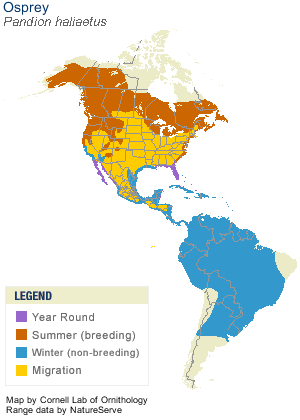
© 2003 Cornell Lab of Ornithology
|
Habitat |
|
Breeds in variety of habitats with shallow water and large fish, including boreal forest ponds, desert salt-flat lagoons, temperate lakes, and tropical coasts. Winters along large bodies of water containing fish. |
|
Behavior |
|
Dives feet-first into water to grab fish from near surface. Often hovers over water before dive. |
|
Food |
|
Fish. |
Taxonomy
| Kingdom: | Animalia |
| Phylum: | Chordata |
| Subphylum: | Vertebrata |
| Class: | Aves |
| Order: | Accipitriformes |
| Family: | Pandioninae |
| Genus: | Pandion |
| Species: | Pandion haliaetus |
| Subspecies: | Pandion haliaetus carolinensis |
| Pandion haliaetus haliaetus |
Similar Species |
|
Bald Eagle is larger, has a dark chest and underside, yellow legs, and flies with its broad wings held flat. |
|
Bird Sound |
|
Calls are short, chirping whistles |
|
Eggs look like this |
|
Photo taken from: ARCTOS Collaborative Collection Management Solution |
Videos
Osprey
Out on a Limb
